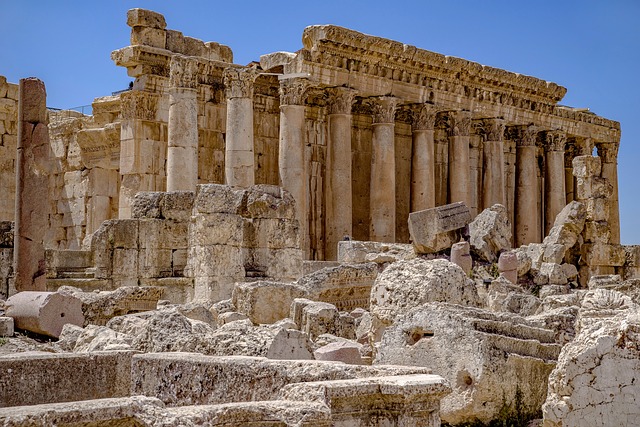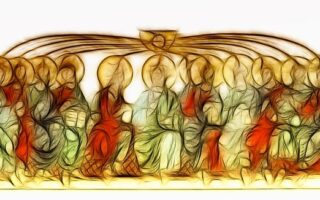The Roman Catholic Church is one of the oldest institutions in the world, with a history dating back over two thousand years. Founded by Jesus Christ and his apostles, the Church traces its origins to the first century AD.
Table of Contents
History of the Roman Catholic Church
Have you ever wondered how old the Roman Catholic Church is? The answer might surprise you! The Roman Catholic Church traces its origins back to the time of Jesus Christ and his apostles. That’s right, the church is over 2,000 years old!
The story of the Roman Catholic Church begins with Jesus Christ, who founded the church during his ministry on Earth. According to the Bible, Jesus appointed Peter as the leader of his followers, giving him the title of the first pope. This event is considered the founding of the papacy, which has been a central institution in the Roman Catholic Church ever since.
After Jesus’ death and resurrection, his apostles spread his teachings throughout the Roman Empire. The early Christian community faced persecution from the Roman authorities, but they continued to grow in numbers and influence. By the 4th century, Christianity had become the official religion of the Roman Empire under Emperor Constantine.
The Roman Catholic Church continued to evolve and grow over the centuries, becoming a powerful institution in Europe and beyond. The church played a central role in the development of Western civilization, preserving knowledge and culture during the Dark Ages and Middle Ages. The church also wielded significant political power, with popes often acting as mediators and arbitrators in conflicts between European rulers.
One of the defining moments in the history of the Roman Catholic Church was the Great Schism of 1054, which split the church into the Roman Catholic Church in the West and the Eastern Orthodox Church in the East. The schism was the result of theological differences and political tensions between the pope in Rome and the patriarch in Constantinople. Despite efforts at reconciliation, the two branches of Christianity remain separate to this day.
The Roman Catholic Church faced challenges and controversies throughout its history, including the Protestant Reformation in the 16th century. The Reformation led to the rise of Protestantism and the fragmentation of Christianity into various denominations. The Catholic Church responded with the Counter-Reformation, a movement to reform and revitalize the church in response to the challenges posed by Protestantism.
In the modern era, the Roman Catholic Church continues to be a major force in global affairs, with over a billion members worldwide. The church has played a prominent role in social justice issues, advocating for the poor and marginalized, as well as in promoting peace and reconciliation in conflict zones around the world.
So, how old is the Roman Catholic Church? The answer is over 2,000 years old, with a rich and complex history that has shaped the course of Western civilization. From its humble beginnings in ancient Palestine to its global presence today, the Roman Catholic Church remains a powerful and influential institution in the world.
Key Events in the Roman Catholic Church’s History
Have you ever wondered how old the Roman Catholic Church is? The answer might surprise you! The Roman Catholic Church is one of the oldest institutions in the world, with a history that dates back over two thousand years. Its origins can be traced back to the time of Jesus Christ and his apostles, making it one of the oldest Christian denominations in existence.
The Roman Catholic Church traces its roots back to the teachings of Jesus Christ, who lived in the first century AD. According to tradition, Jesus appointed the apostle Peter as the leader of his followers, giving him the title of the first pope. This event is considered to be the founding moment of the Roman Catholic Church, as Peter is seen as the first in a long line of popes who have led the church throughout its history.
Over the centuries, the Roman Catholic Church has played a central role in shaping Western civilization. It has been a powerful force in politics, culture, and society, influencing everything from art and architecture to education and social welfare. The church has also been a major player in world events, with popes often acting as mediators and peacemakers in times of conflict.
One of the key events in the history of the Roman Catholic Church was the Great Schism of 1054, which divided the church into the Roman Catholic Church in the West and the Eastern Orthodox Church in the East. This split was the result of theological differences and political tensions between the two branches of Christianity, and it marked a significant turning point in the history of the church.
Another important event in the history of the Roman Catholic Church was the Protestant Reformation of the 16th century. This movement, led by figures such as Martin Luther and John Calvin, challenged the authority of the pope and the teachings of the church, leading to a schism that divided Western Christianity into Catholic and Protestant branches. The Reformation had a lasting impact on the church, leading to reforms and changes that continue to shape the church to this day.
Despite these challenges and divisions, the Roman Catholic Church has remained a powerful and influential institution throughout its long history. It has weathered wars, revolutions, and scandals, and it continues to be a source of inspiration and guidance for millions of people around the world. The church’s teachings on faith, morality, and social justice have had a profound impact on society, shaping the way people think and act in the world.
Today, the Roman Catholic Church is a global institution with over a billion members worldwide. It continues to play a central role in the lives of its followers, providing spiritual guidance, moral teachings, and a sense of community and belonging. As the church looks to the future, it faces new challenges and opportunities, but its long history and enduring traditions provide a solid foundation for its continued growth and influence.
In conclusion, the Roman Catholic Church is one of the oldest and most influential institutions in the world, with a history that spans over two thousand years. From its humble beginnings in the time of Jesus Christ to its present-day global presence, the church has played a central role in shaping Western civilization and continues to be a source of inspiration and guidance for millions of people around the world. Its long history is a testament to the enduring power and influence of faith and tradition in the lives of believers.
Influence of the Roman Catholic Church on Western Civilization

Have you ever wondered how old the Roman Catholic Church is? Well, let’s dive into the history of this ancient institution and explore its influence on Western civilization.
The Roman Catholic Church traces its origins back to the time of Jesus Christ, who is believed to have founded the Church around 33 AD. This makes the Church over 2000 years old, making it one of the oldest institutions in the world. Over the centuries, the Church has played a significant role in shaping Western civilization, influencing everything from art and architecture to politics and morality.
One of the most significant ways in which the Roman Catholic Church has influenced Western civilization is through its promotion of education. The Church has a long history of establishing schools and universities, dating back to the Middle Ages. These institutions played a crucial role in preserving knowledge and promoting intellectual inquiry during a time when much of Europe was in turmoil.
The Church has also been a major patron of the arts, commissioning some of the most famous works of art in history. From the stunning frescoes of the Sistine Chapel to the intricate stained glass windows of Gothic cathedrals, the Church has inspired countless artists to create works that continue to captivate audiences to this day.
In addition to its contributions to education and the arts, the Roman Catholic Church has also had a profound impact on politics and morality in Western civilization. Throughout history, the Church has played a central role in shaping laws and social norms, often advocating for justice and equality for all people. The Church’s teachings on social justice and human rights have influenced countless individuals and organizations to work towards a more just and equitable society.
Despite its long history and influence, the Roman Catholic Church has not been without controversy. Throughout the centuries, the Church has faced criticism for its role in various political and social issues, as well as for instances of corruption and abuse within its ranks. However, the Church has also shown resilience and a willingness to address these issues, working towards reform and reconciliation with those who have been harmed.
In conclusion, the Roman Catholic Church is a venerable institution with a rich history and a profound influence on Western civilization. From its promotion of education and the arts to its advocacy for social justice and human rights, the Church has left an indelible mark on the world. While it has faced challenges and controversies over the centuries, the Church continues to be a source of inspiration and guidance for millions of people around the globe. So, the next time you wonder how old the Roman Catholic Church is, remember that its age is not just a number – it is a testament to the enduring impact of this ancient institution.
Evolution of Roman Catholic Church Doctrine
Have you ever wondered how old the Roman Catholic Church is? The answer might surprise you. The Roman Catholic Church traces its origins back to the time of Jesus Christ and his apostles. In fact, the Church considers itself to be the one true Church founded by Jesus himself.
Over the centuries, the Roman Catholic Church has evolved and developed its doctrine in response to changing times and circumstances. One of the key aspects of this evolution is the development of the Church’s teachings on various theological and moral issues.
One of the earliest developments in Roman Catholic Church doctrine was the establishment of the Nicene Creed in the 4th century. This creed outlined the basic beliefs of the Church, including the belief in the Trinity and the divinity of Jesus Christ. The Nicene Creed continues to be recited by Catholics around the world to this day.
Another important development in Roman Catholic Church doctrine was the establishment of the papacy. The Pope, as the Bishop of Rome and successor to St. Peter, is considered to be the spiritual leader of the Church. The papacy has played a crucial role in shaping the Church’s teachings and guiding its members throughout history.
Throughout the Middle Ages, the Roman Catholic Church continued to develop its doctrine in response to various challenges and controversies. One of the most significant events during this time was the Great Schism of 1054, which led to the split between the Roman Catholic Church and the Eastern Orthodox Church. Despite this division, the Roman Catholic Church continued to grow and expand its influence throughout Europe and beyond.
In the 16th century, the Roman Catholic Church faced another major challenge with the Protestant Reformation. This movement, led by figures such as Martin Luther and John Calvin, sought to reform the Church and challenge its teachings on various theological issues. The Reformation led to a split within Western Christianity, with the emergence of various Protestant denominations.
In response to the Protestant Reformation, the Roman Catholic Church held the Council of Trent in the 16th century. This council reaffirmed many of the Church’s teachings and practices, while also addressing some of the criticisms raised by the reformers. The Council of Trent played a crucial role in shaping the modern Roman Catholic Church and its teachings.
In more recent times, the Roman Catholic Church has continued to evolve and develop its doctrine in response to changing social and cultural norms. One of the most significant developments in recent years has been the Second Vatican Council, held in the 1960s. This council sought to modernize the Church and promote greater dialogue with the modern world.
Overall, the Roman Catholic Church is a living and evolving institution that continues to adapt and respond to the challenges of the modern world. Despite its long history, the Church remains committed to its core beliefs and teachings, while also seeking to engage with the world around it. The Roman Catholic Church may be old, but it is also constantly changing and growing.
Challenges Faced by the Roman Catholic Church Today
Have you ever wondered how old the Roman Catholic Church is? Well, the answer might surprise you. The Roman Catholic Church traces its origins back to the time of Jesus Christ, making it over 2,000 years old. That’s right, the church has been around for millennia, weathering countless challenges and changes over the centuries.
One of the biggest challenges faced by the Roman Catholic Church today is the issue of declining membership. In recent years, the church has seen a decline in the number of people attending Mass and identifying as Catholic. This trend is particularly pronounced in Western countries, where secularism and individualism are on the rise. Many young people are turning away from organized religion in favor of a more personalized spirituality.
Another challenge facing the Roman Catholic Church is the issue of clergy sexual abuse. Over the past few decades, the church has been rocked by numerous scandals involving priests who have abused children and vulnerable adults. These scandals have damaged the church’s reputation and eroded trust in its leadership. The church has taken steps to address this issue, including implementing safeguarding policies and procedures, but the damage has already been done.
In addition to declining membership and clergy sexual abuse, the Roman Catholic Church also faces challenges related to social justice and inequality. Pope Francis has been a vocal advocate for the poor and marginalized, calling on world leaders to address issues such as poverty, immigration, and climate change. However, the church’s stance on these issues has not always been well-received by all Catholics, leading to internal divisions and disagreements.
Despite these challenges, the Roman Catholic Church remains a powerful and influential institution with a global reach. The church continues to provide spiritual guidance and support to millions of people around the world, offering a message of hope and redemption in a troubled world. While the church may face obstacles and setbacks, its mission to spread the teachings of Jesus Christ remains unchanged.
As the Roman Catholic Church looks to the future, it must confront these challenges head-on and adapt to a changing world. The church must find ways to engage with younger generations and address the concerns of its members. It must also continue to hold its leaders accountable for their actions and work towards a more just and equitable society.
In conclusion, the Roman Catholic Church is facing a number of challenges in the modern world. From declining membership to clergy sexual abuse to social justice issues, the church must navigate a complex landscape in order to remain relevant and effective. However, with faith, perseverance, and a commitment to its core values, the Roman Catholic Church can overcome these challenges and continue to fulfill its mission for years to come.
Conclusion
The Roman Catholic Church is approximately 2,000 years old.
For licensing reasons, we must provide the following notice: This content was created in part with the help of an AI.


